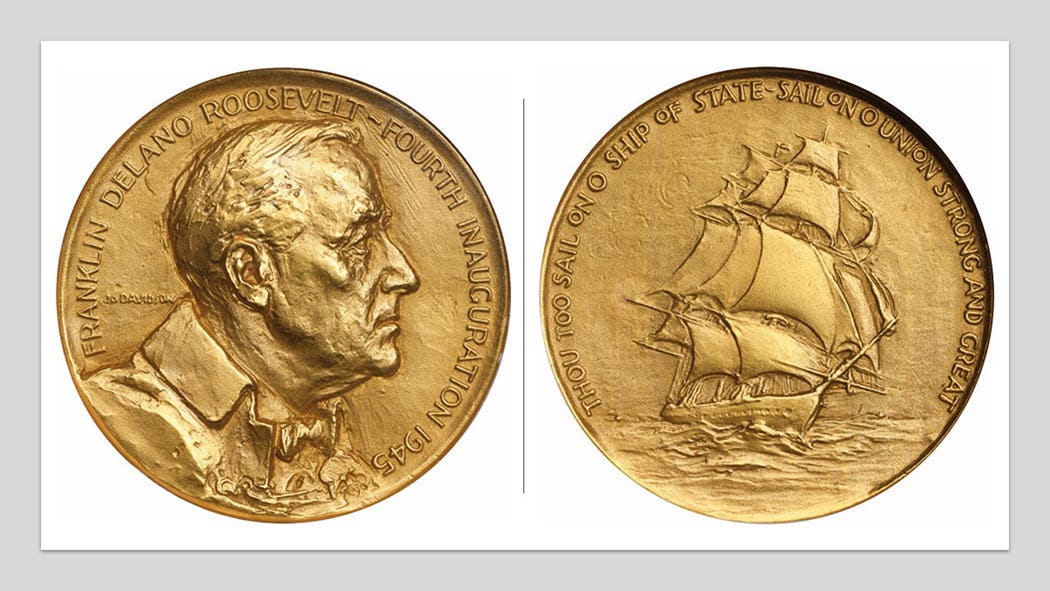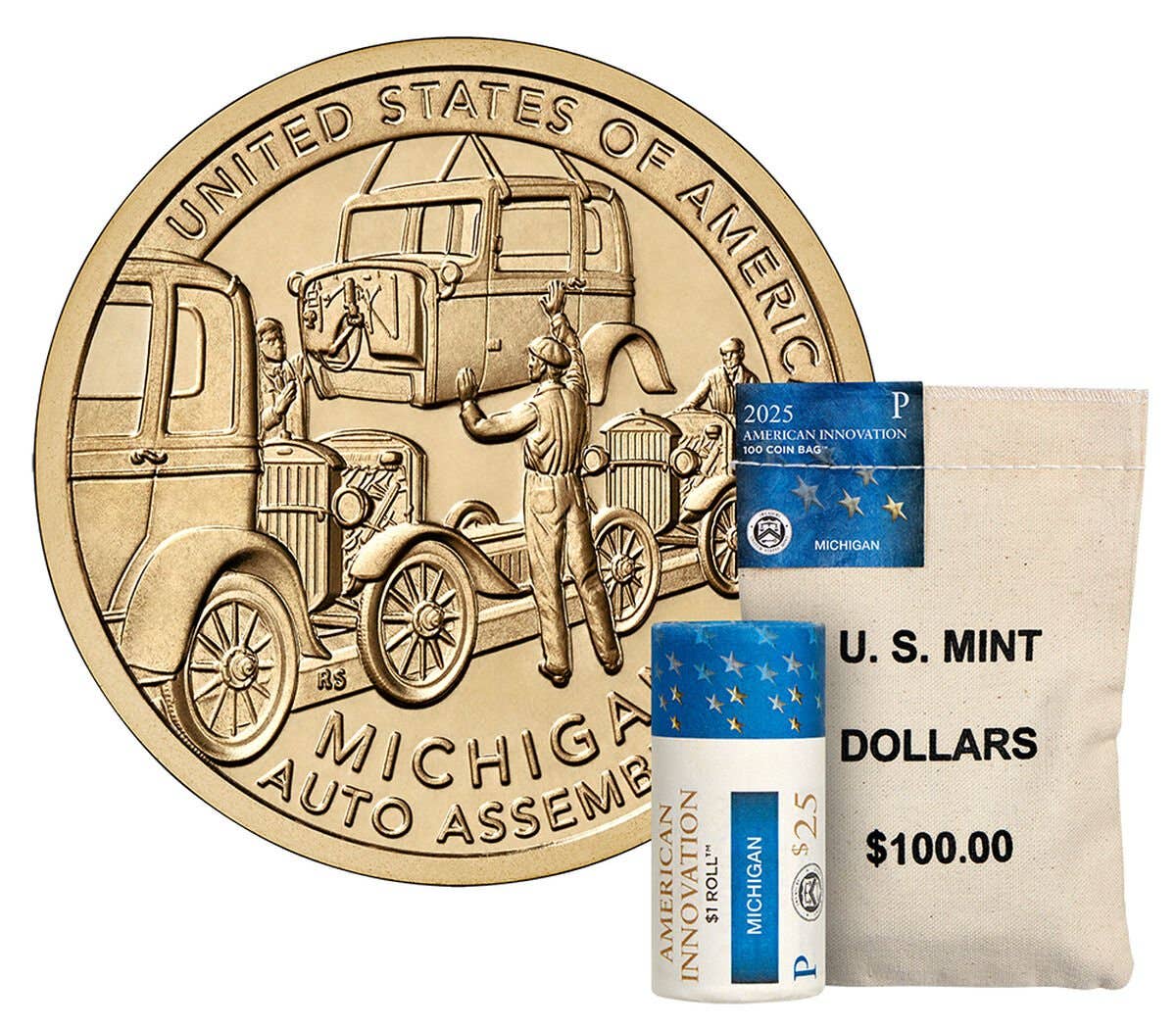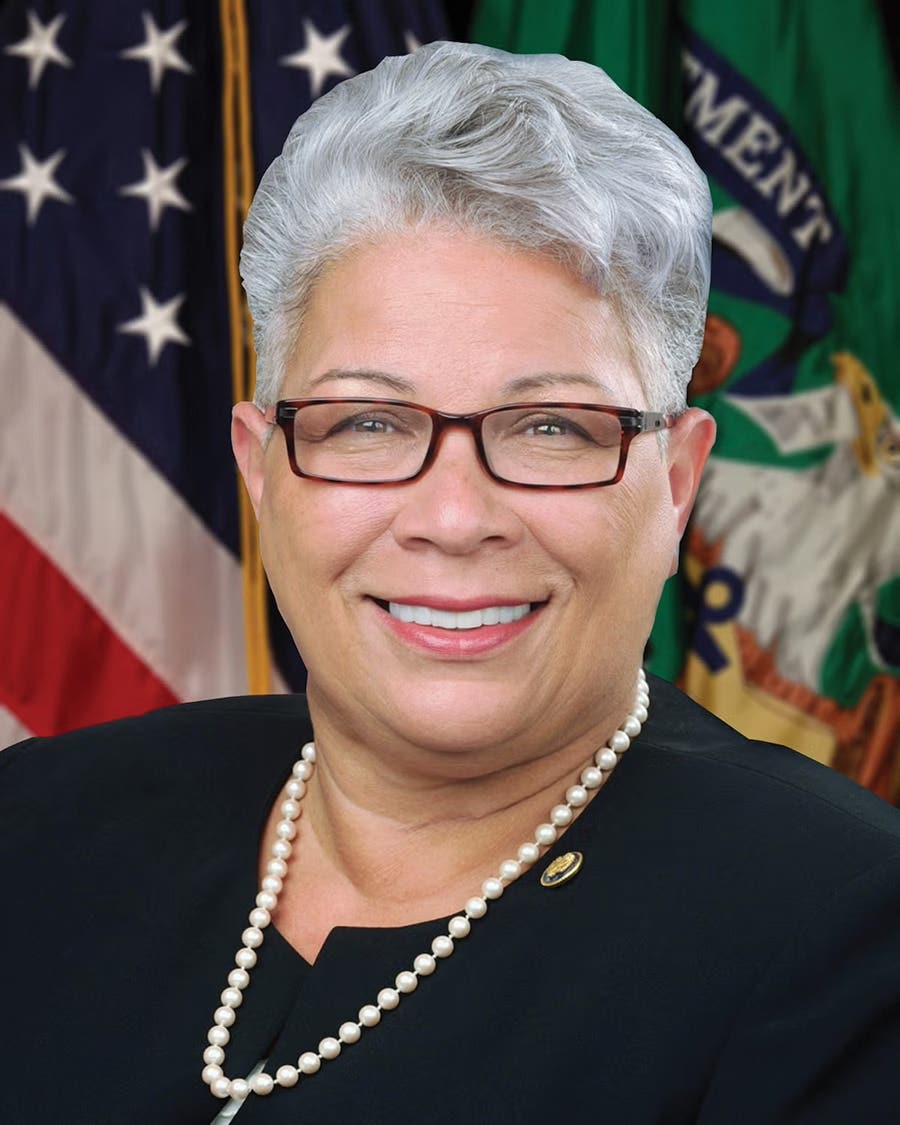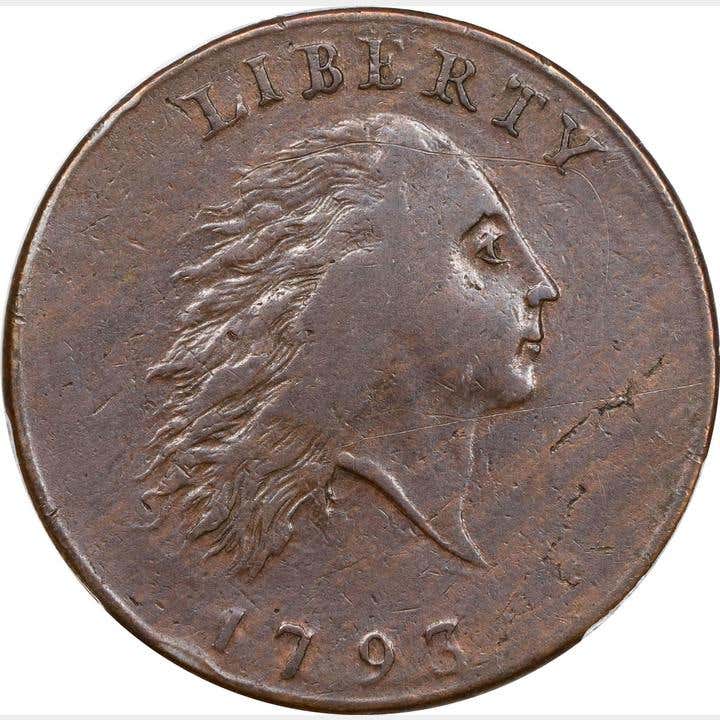Know the makers of first U.S. coins?
By William Eckberg We think of our coins as having been produced by a faceless entity called The Mint. What many of us do not realize is that a mint…
By William Eckberg
We think of our coins as having been produced by a faceless entity called The Mint. What many of us do not realize is that a mint is a factory producing a product: coin of the realm. Though the process is now entirely mechanized, in the U.S. Mint’s early days, coin production was a very labor-intensive process. The dies were engraved by hand, the metal was cast into ingots by hand, planchets were punched out of strip by hand, their edges upset and lettered by hand and struck by hand – a true manufactory. All of this was hard, heavy work. The workmen who did it all had a number of machines to assist them, but many of those machines were made at the Mint by the workmen themselves.
Why should we care about these men? They were not “heroes” in the sense of having defeated a foreign enemy. They were not drafters or signers of the Declaration of Independence or the Constitution. They were not politicians. They were not wealthy or powerful businessmen. They may not even have owned property, in which case they would not even have been eligible to vote! Their birth dates and most of their death dates are not recorded in the numismatic literature. Very few of their names even appear in the Philadelphia city directories of the time. They were men who were skilled at trades and men who were hard laborers, what we would now call “blue collar workers,” and they were the men who produced the first coins of the new United States of America, coins that are among the most revered of all the American coin series. This is their story.
To set the stage, we first briefly introduce the officers of the Mint as established by Congress. They were the Director, Chief Coiner, Engraver, Assayer and Treasurer. Of those positions, only three, Director, Chief Coiner and Treasurer, were filled when the 1793 coins were produced. There was no Assayer; there was no need for one, as the Mint did not produce precious metal (gold and silver) coinage that year; copper coins were not legal tender, so there was no need to assay their purity. Perhaps surprisingly, there was also no Engraver on the payroll until after all of the 1793 coins were produced and delivered. We know generally what the duties of the officers in place in 1793 were, because Elias Boudinot wrote a pamphlet called “Orders and Directions for Conducting the Mint of the United States” upon his appointment late in 1795.
David Rittenhouse, the country’s foremost scientist after the death of Benjamin Franklin, was the Mint’s first Director. It might seem strange to us that the Director of the Mint would be a prominent scientist, but Sir Isaac Newton, one of the most prominent scientists of all time, served as Master of the Tower Mint in London for many years. Indeed, that is how Newton earned his living. Appointed in 1792, Rittenhouse served until ill health forced his resignation in June of 1795. The Director’s duty was to oversee all of the activities of the Mint. All of the other officers reported to him. However, as first Director, Rittenhouse’s first job was to identify and arrange the purchase of property for the Mint. He bought numbers 37 and 39 North Seventh St. and a contiguous lot behind on Filbert St., both conveniently near his own residence.
Tristram Dalton was Treasurer. He was responsible for paying the staff and receiving struck coins from the Chief Coiner and placing them in circulation. Had there been any precious metal bullion deposits, he would have overseen them, had them assayed, and accounted for their value in coins struck and waste. Accounting for copper appears to have been more lax, at least in the earliest years, since cents and half cents were not legal tender.
Robert Scot was the first Engraver on the payroll, but he was not hired until late in the year, after all of the 1793 coinage had been struck and delivered. His job was to produce dies and punches for creating the dies. At some earlier time, Joseph Wright was to have been appointed, though his official appointment was never finalized before his death from yellow fever in September. There are no records of his appointment, no records that he was paid for any work in 1793, and no records that he ever worked at the Mint in 1793. The only evidence we have that he was to be appointed are letters between Jefferson and Washington about the need for a new nominee and that Scot’s appointment letter indicates that he is to replace Wright. His estate was paid 50 guineas ($233.33) for cutting the Henry Lee Comitia Americana medal in 1792.
Henry Voigt was Chief Coiner. One might think that his main duty was to strike coins, but that is not so. Rather, he was a manager who was in charge of procuring the machines needed to coin and supervising the work of the men in his shop. In 1793 he also had another very important job. Because there was no engraver on staff, Voigt had to engrave the dies. We know this because in 1795, before he became Director, Elias Boudinot reported to Congress thatp“before an engraver could be engaged, … the chief coiner was obliged to make the dies for himself.” Taking Boudinot’s report at face value, and since there are no records of anyone being paid to engrave dies that year, Voigt must have engraved ALL of the dies used in 1793 – those used for Chain, Wreath and Liberty Cap cents and half cents. Recent research has shown that Voigt created hubs for the Wreath cent and the 1792 disme pattern. The disme hub was resurrected in 1793 for the half cents. Voigt was also responsible for purchasing supplies for the Mint, including copper to be used in coinage (and rum for the workers’ rations!), and he kept ledgers that included all such purchases. Unfortunately, his ledger from 1792 through March 1793 has been lost. However, his ledger beginning on April 3, 1793 still exists, and it shows much about the activities at the Mint in that year. In particular, it specifies who worked when and sometimes what the men did.
The new Mint had essentially no equipment for coinage when it was established. Boudinot’s report to Congress includes the following: “Not only the whole machinery, in all its parts, but all the tools necessary for their formation have been executed at the mint. This could not be effected by an union of all the proper artizans, each a complete workman in his own department, but, from necessity, was confined to the principal officer of the coining department, who could only proceed from theoretic principles, with the assistance of such workmen as could be procured, to whom most of the machines, however common in Europe, were entirely new” [spelling and punctuation as in the original].
The work of making the equipment for coinage and the tools needed to make the equipment must have begun after the government took over the building on July 18, 1792. On Nov. 6, Washington reported that the Mint buildings “are now putting into proper condition for the purpose of the establishment.” Coinage presses were purchased, but furnaces for melting, annealing and assaying, rollers, a horse mill, a draw bench, milling machine to produce raised edges, etc., all had to be built from scratch on site using tools, many of which were also produced on site.
To give an idea of what the jobs were in Voigt’s coinage shop, Boudinot’s 1795 Orders and Directions specifies that the Chief Coiner’s staff includes “A foreman of the Mint. – An adjuster – A millwright and mason. – A journeyman blacksmith. – A roller cioner [sic] and annealer – A drawer and miller. – Two Pressmen. – A door keeper and night watch. – An hostler [groom or stableman] and driver, with other necessary workmen as occasion may require, and one clerk to keep his accounts and to attend the receipt and delivery of metals and coins as may be necessary” [spelling and punctuation as in the original]. This list gives a good idea of the skills that were required of the men who worked at the Mint in its earliest days.
Voigt oversaw a staff of 14 men in 1793. His ledger names them, gives the hours worked and pay scale of each. Where the work involves coin production, it specifies exactly what their jobs were. Interestingly, it rarely specifies the work done that was not directly related to coinage. That would include carpentry, masonry, smithing, millwrighting, equipment manufacture and repair and other essential work. Coinage was actually an uncommon event. The Chain cents were struck over 10-12 days in late February and early March. The Wreaths were struck over 12 days in April and 4 in June-July. The Liberty Cap cents were coined in 2 days during July, and the half cents during 4 days in July. All together, the 1793 cents and half cents were coined in 32-34 days over four months; there was no coinage at all during the other eight months. It is of particular interest to us that Voigt’s account book names the coiners, those who fed the blanks and removed the struck coins, but not the pressmen, who did the heavy work of swinging the arms of the screw press.
The following men were on Voigt’s payroll during April-September, 1793: Jacob Bay (to Aug. 13), Thomas Flude, Daniel Gerard, Frederick Guyer (From Aug. 13), Lewis Lamange, Patrick Ryon, John Schreiner, Nicholas Sinderling, Mathias Sumers, John Ward, William Ward, Thomas Warwick, John York (to April 13), and Jonathan Zollinger. From surviving fragmentary information, we know that Sinderling, Flude and Sumers were employed at the Mint as early as 1792. Of them, only Schreiner, Sinderling, John Ward and Sumers were still employed at the Mint in 1795.
Their pay was reckoned in cents per day. They worked a 6-day week, approximately 11 hours per day. They were paid on Saturday for the work through the previous Saturday. Warwick and York were paid the most at 150 cents/day; John Ward was next at 111 cents; Bay, Flude, Guyer, Ryon, Schreiner and Sinderling each received 100 cents; Gerard 90 cents, Lamange 83 cents, William Ward 80 cents and Sumers and Zollinger each 67 cents. We can presume that men with higher pay were doing the more skilled or more important jobs.
How much did all of this labor cost? According to the U.S. Mint expense warrants, the total wages paid to the workmen amounted to $2,557.44, and administrative salaries came to $4,991.88. The total production of the Mint in 1793 was 110,512 cents and 35,335 half cents, or a total value of $1,281.795. It is little wonder that Congress thought the Mint too expensive to operate and seriously considered contracting out coinage.
Warwick was certainly the foreman of the Mint. He was the highest paid, his name appears first on the list of men working each day, no specific duties are listed for him except at the end of May and beginning of June. Rather, he, like the other men whose duties are not specified below, was just listed as “in the shop.” May 28-June 3 appears to have been an “all hands on deck” period in which copper was cast, rolled, drawn and cut. Warwick and several of the rest of the staff were involved with this activity. The blank planchets that resulted from this work were evidently used to strike both Wreath and Liberty Cap cents.
York was a coiner. He, with Bay, coined Wreath cents on April 4, 5, 6, 8, 9, 10 and 13. Thereafter, he disappears from the record. It seems likely that he and Bay also coined Chain cents in late February and early March. I suspect, though there is no direct evidence, that he must have been hired because he was familiar with the operation of a screw press and taught others on staff to continue the work.
John Ward’s duties were not specified. By 1795 he worked as a miller, upsetting and lettering edges of blanks, but he was not identified as doing that in 1793. He continued to work at the Mint until 1797.
Schreiner’s activities in 1793 were not specified, but he was Chief Pressman by 1795 and foreman of the Mint in 1799.
Sinderling’s activities were not specified, but we know that he worked in July 1792 taking down the still house that the horse-powered mill replaced. From this we can conclude that he was probably a general laborer. In 1795 he worked as an annealer, which means he was responsible for softening strip and planchets by heating to make them easier to roll and strike, respectively.
Ryon’s duties were not specified most days. Like Warwick, he was always “in the shop.” From May 28-June 3, he, along with Warwick, Flude and Lamange were working at casting, cutting and drawing copper. Drawing meant use of a “draw bench” to bring the copper strip to the proper thickness for punching out planchets.
Flude had broad responsibilities. We know that he installed a coining press on September 25, 1792. He replaced York as a coiner beginning on April 15. As such, he was a major coiner of the Wreath and Liberty Cap cents and the half cents. However, he did much more. He spent several days in April casting and refining steel. In late April-early May he and Gerard cast, rolled and cleaned the copper for half cent production. He also worked with copper from May 21-June 14 and again in July. In addition, he repaired the furnace. Because of his work with steel, it seems likely that he was the journeyman blacksmith. Because he worked with copper more than anyone else, we can consider him among the most responsible for the production of 1793 coins.
Bay is an interesting case. It has been widely reported that his job was to cut punches to be used for engraving dies; a task that would have gone to the Engraver had one been on the payroll. The punches would have each contained a single letter, number, leaf, chain link or dot in reverse, much like a typewriter key. Indeed, he was listed as “cutting punches” most days. Beyond that, however, he was responsible, along with York and later Flude and Gerard, for coining many of the Wreath cents. Extrapolating backwards, it seems likely that he was also involved with York in coining the Chain cents. Alas, Bay was fined for drunkenness (including on July 5; the 4th was a holiday even then!). After July 1, the last day of Wreath coinage, he never struck coins again. He disappears from the payroll after Aug. 13. He died of yellow fever that year, so it is possible that he disappeared from the payroll because of illness. It is also possible that he was discharged, as his replacement as a punch cutter began work that same day. We might guess that Bay was related to a John Bay who worked at the Mint in 1795 as a “boy” and in 1796-7 as a pressman.
Guyer replaced Bay beginning Aug. 13 and, like Bay, cut punches. Interestingly, no dies were produced using these punches in 1793, as Liberty Cap cent and half cent coinage had been completed in late July.
Gerard worked with Flude most of the time. Initially, we find him cleaning copper planchets for Wreath cents, and by April 15 he is coining along with Bay and Flude. From April 29-May 15, both Flude and Gerard were casting, annealing and rolling copper for half cents and then cleaning the planchets. For unknown reasons, those planchets were not used until late July. From May 21-June 8 both were working on copper for Wreath and Liberty Cap cents. From June 21-26 they finished working on the copper for the last Wreath cents and possibly for Liberty Cap cents. Again with Bay, they coined the last Wreath cents from June 27-July 1. Between July 18-25, Flude and Gerard coined all of the Liberty Cap cents and half cents.
Lamange assisted Flude when he worked at night casting. He also worked at copper during the all-hands efforts in late May-early June.
William Ward’s only job was to operate the upsetting mill, commonly but incorrectly called a “Castaing press.” Its function was to raise the rim, apply the edge device and make the planchet perfectly round before striking. It should be of some interest that this was the lowest paying job other than the laborers. He may have been related to John Ward, who became the miller – at a much higher wage – by 1795.
Sumers and Zollinger are listed as “Labourers” nearly every day. On April 26, their work was specified as “at foundation leveling.” We can speculate that as low men on the totem pole, they did the hardest and dirtiest jobs, perhaps including as pressmen. Interestingly, Sumers was one of the men tearing down the still house the day after the government took the deed for the Mint property and did some millwork. By 1795 he was the doorkeeper and night watchman. He continued in that position until his death in 1804, whereupon his son replaced him.
We might ask why so few of the 1793 employees were still at the Mint in 1795. We can’t know for sure, but it seems likely that a few died of yellow fever, and the Mint’s closure due to yellow fever caused some to seek alternate employment. We know that in 1799 there was an agreement signed by some Mint personnel that they would receive half pay during the closure if they promised to return to the Mint after the epidemic passed. Perhaps this was also done in 1793.
That they disappeared from the record isn’t surprising. They were laborers, low on the social scale, and they passed quietly into history. To quote scripture, they were men “which have no memorial; who are perished, as though they had never been; and are become as though they had never been born.”
Almost. Fortunately, we can now give them their due.
We now know that five men — John York, Jacob Bay, Thomas Flude, Daniel Gerard and William Ward—were responsible for most of the production work on the 1793 coins, with some help from a fourth: Mathias Sumers. Possibly others were involved in the blanking process. So the next time you are at a coin show of reasonable size, ask to see a 1793 cent or half cent. Hold it in your hand and look at it carefully. Keep in mind that real workmen made it – not some abstract governmental entity called “The Mint.” Remember to thank Thomas Flude and Daniel Gerard for casting and rolling the copper and York, Bay, Flude or Gerard for striking the coin. Thank William Ward (and possibly Mathias Sumers) for applying the edge device. Perhaps it would even be appropriate for you to raise a glass to the memory of Jacob Bay who coined many of the Wreaths and probably Chains, produced the letter punches, was twice fined for drunkenness and would, like Wright, soon die from yellow fever. And don’t forget about all of the mint red gem uncirculated 1793 cents and half cents these workmen produced nearly two and a quarter centuries years ago.
This article was originally printed in Numismatic News. >> Subscribe today.
More Collecting Resources
• Subscribe to our monthly Coins magazine - a great resource for any collector!
• If you enjoy reading about what inspires coin designs, you'll want to check out Fascinating Facts, Mysteries & Myths about U.S. Coins.








